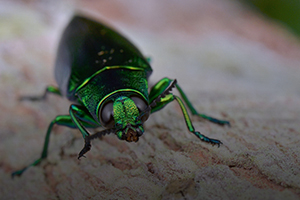Robotic Beetles

Researchers in Singapore have successfully created tiny flying robots by fitting beetles with miniature electronic “backpacks” and implantable electrodes capable of controlling their flight. The bionic hybrids allowed them to bypass the difficult task of building small robotic bodies and pose several advantages over battery-operated drones.
Electrodes were implanted into four flight muscles of male Mecynorhina torquata beetles. Small electrical pulses were administered to steer them left or right, and changing the frequency of the pulses was demonstrated to be effective at controlling their speed. The team is now looking at finding a means to alter their altitude as well as to hover in place. They are also learning how to care for their flying friends. Although the modifications did not appear to affect the lifespan of the beetles, it is not known whether invertebrates feel pain.
In addition to being less costly than drones, insects have flight times that are measured in hours rather than minutes, since they’re not limited by battery life. They are also better at adapting to turbulent conditions without the need for human intervention. Eventually, the bionic bugs may be equipped with carbon dioxide detectors and infrared sensors for search and rescue operations. For now, demonstrating the technical possibilities of autonomous, insect-sized robots will undoubtedly fuel more research into how these insect-machine hybrids can be used.
For information: Hirotaka Sato, Nanyang Technological University, School of Mechanical & Aerospace Engineering, 50 Nanyang Avenue, Singapore 639798; phone: +65-6790-5010; email: hirosato@ntu.edu.sg; Web site: http://www.ntu.edu.sg/Pages/home.aspx